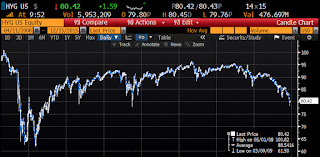| Last | Change | Percent | |
| S&P Futures | 2066.9 | -5.9 | -0.28% |
| Eurostoxx Index | 3292.5 | -21.8 | -0.66% |
| Oil (WTI) | 36.87 | -1.0 | -2.64% |
| LIBOR | 0.603 | 0.000 | 0.00% |
| US Dollar Index (DXY) | 98.32 | 0.220 | 0.22% |
| 10 Year Govt Bond Yield | 2.31% | 0.01% | |
| Current Coupon Ginnie Mae TBA | 103.8 | ||
| Current Coupon Fannie Mae TBA | 102.8 | ||
| BankRate 30 Year Fixed Rate Mortgage | 3.91 |
Markets are lower this morning on no real news. Bonds and MBS are down small.
Not a lot going on today with New Year's just around the corner. The MBA will be releasing mortgage application data next week, but is skipping this week.
Pending Home Sales fell 0.9% in November and are up 5.1% YOY. The Midwest and South had modest gains while the Northeast and West fell. Tight inventory and rising prices are hitting affordability.
A good recap of 2015. They discuss wages, consumer confidence and real estate, with a good chart of where the action was (and wasn't) in 2015.
Meanwhile, the IMF is predicting global growth will be disappointing in 2016. They are blaming a slowdown in China and rising rates in the US as the catalysts. Interesting theory about US rates being a drag since G7 yields have been going nowhere as US rates have risen and the spread of Treasuries to Bunds (a proxy for global interest rates) hit a record earlier this year.
Median incomes are almost back to pre-recession levels, according to Sentier Research. The median income at the end of November was $56,888 and the median existing house price was $220,000. This puts the median income / median house price ratio to 3.87x, which is still a little elevated compared to pre-bubble years.












